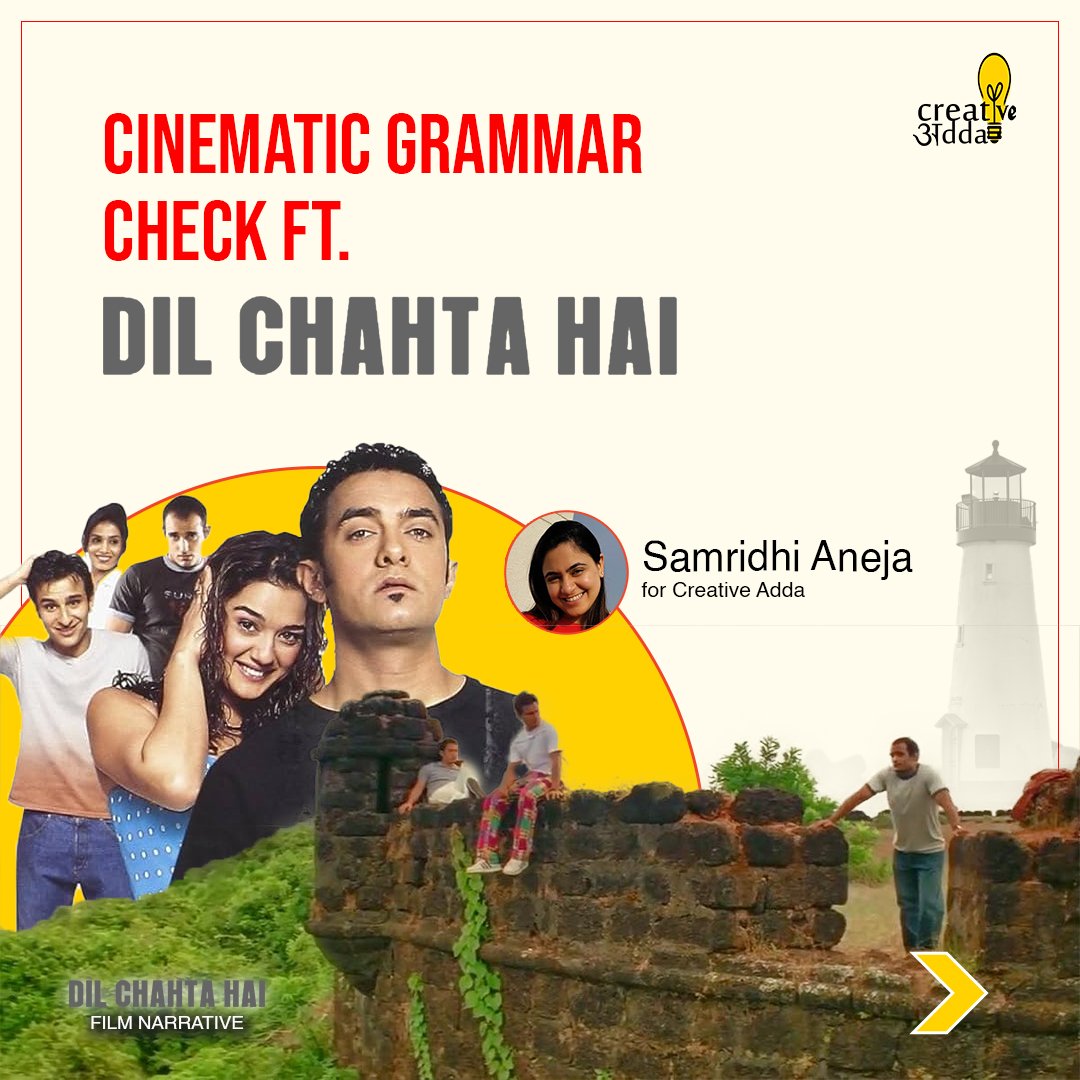 India
India  Mon Dec 2025
Mon Dec 2025
 Publish Date:
29 Jul 2024
Publish Date:
29 Jul 2024
Cinematic Grammar Check ft. Dil Chahta Hai
Dil Chahta Hai has been embedded in the hearts
of millennials since the day it was brought into the world. It's a story of 3 friends and how they part
ways as and when circumstances begin to appear.
However, not being a dystopian work of art, it ends on a happy note when all the 3 characters unite along with their beloveds. That's the beauty of this movie, it leaves you with hope of life long friendships inspite of all the differences in opinions, careers, choices and lifestyles.
One thing to note is the movie's fine execution on camera angles. Film-makers have made an abundant use of the neutral camera angle and of medium shots; especially in scenes when all the three main characters realise their love for their female counterparts in the film, respectively. It is a neutral angle, and both (hero and heroine) fit into the frame at the same time to enable the audience to know the state of hearts and minds of both characters in their respective scenes, simultaneously.
Out of the parallel stories of all 3, Akaash, Sameer and Siddharth, the story of Siddharth and Tara remains my favourite. Though it is a little difficult to identify whether Siddharth is the deutragonist in the film; his sincerity, sensitivity, and role in the film stands out. He plays the role of an artist, who finds his muse in Tara. Their song "Kaise Hai Ye Rutt" is a visual delight and reminds you of Van Gogh and Monet. Again, notice the neutral, wide angles in their part of the story at major stand-points.
The very last scene of the movie is a round-table shot, the camera rotates around the table like an axis. The interesting thing to note is how all six chcracters are on the same height in the frame, all of them are wearing white, and again, it is the good old neutal level camera angle. This signifies that the conflict has resolved, everything is settled, and all 6 are in the same happy mental space. No one is happier or more sad than the other.



